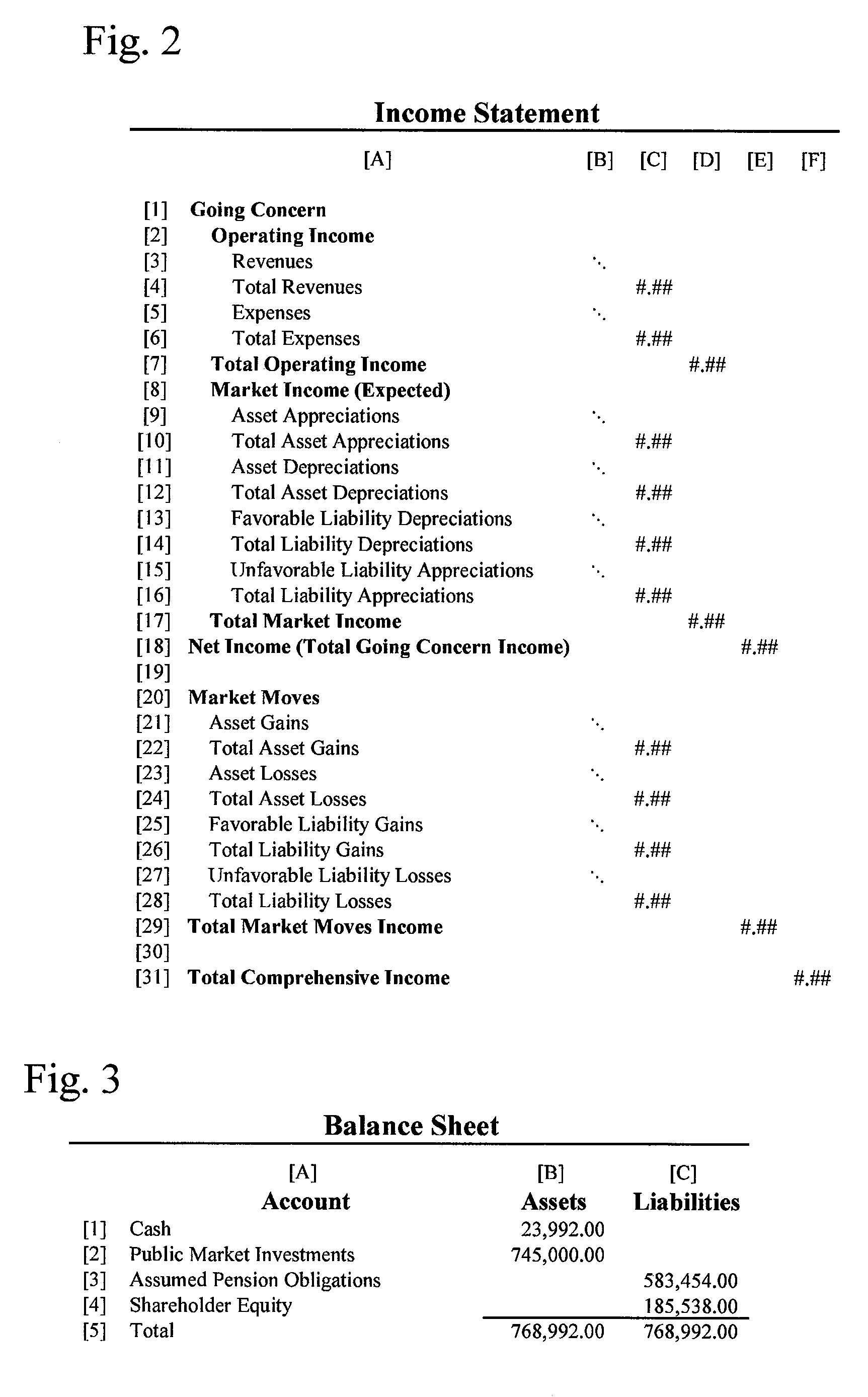Financial accounting methods and systems to account for assets and liabilities
a technology of financial accounting and assets, applied in the field of financial accounting methods and computer systems, can solve problems such as confusion, and inability to accurately represent financial reality
- Summary
- Abstract
- Description
- Claims
- Application Information
AI Technical Summary
Benefits of technology
Problems solved by technology
Method used
Image
Examples
Embodiment Construction
[0061]Introduction
[0062]In the second section below, preliminary definitions and nomenclature are presented. In the third section, the theory of the invention is presented. In the fourth section, implementation and operation is demonstrated by use of an “extended example” covering two accounting periods. In the fifth section, source code that demonstrates key aspects of operation is introduced. In the sixth and last section, miscellaneous considerations are discussed.
[0063]This teaching is accomplished in part by presenting an extended numerical example covering two accounting periods, years 2000 and 2001. This example is only illustrative, and should not be construed to in any way limit or bind the interpretive scope of the present invention. Tables shown use a spreadsheet format in order to facilitate exposition. In an actual implementation of the present inventions, spreadsheets may or may not be utilized.
[0064]Preliminary Definitions and Nomenclature
[0065]The capitalized term “C...
PUM
 Login to View More
Login to View More Abstract
Description
Claims
Application Information
 Login to View More
Login to View More - R&D
- Intellectual Property
- Life Sciences
- Materials
- Tech Scout
- Unparalleled Data Quality
- Higher Quality Content
- 60% Fewer Hallucinations
Browse by: Latest US Patents, China's latest patents, Technical Efficacy Thesaurus, Application Domain, Technology Topic, Popular Technical Reports.
© 2025 PatSnap. All rights reserved.Legal|Privacy policy|Modern Slavery Act Transparency Statement|Sitemap|About US| Contact US: help@patsnap.com



